Disclaimer: This post may contain Amazon affiliate links. Sudachi earns a small percentage from qualifying purchases at no extra cost to you. See disclaimer for more info.
What is Spinach Ohitashi?
Ohitashi (お浸し) is a simple side dish made with blanched vegetables that have been soaked in a dashi-based sauce. Because of the short cooking time, the vegetables maintain their natural color and texture whilst the sauce lightly flavors them and adds subtle umami.
While many Japanese people (including myself until recently!) believe ohitashi is simply the name of the dish, it’s actually the name of the type of preparation/cooking method!
The name is derived from the process of soaking food in dashi, but this process is often omitted these days. Simply boiling the vegetables and pouring soy sauce over them can also be called ohitashi.
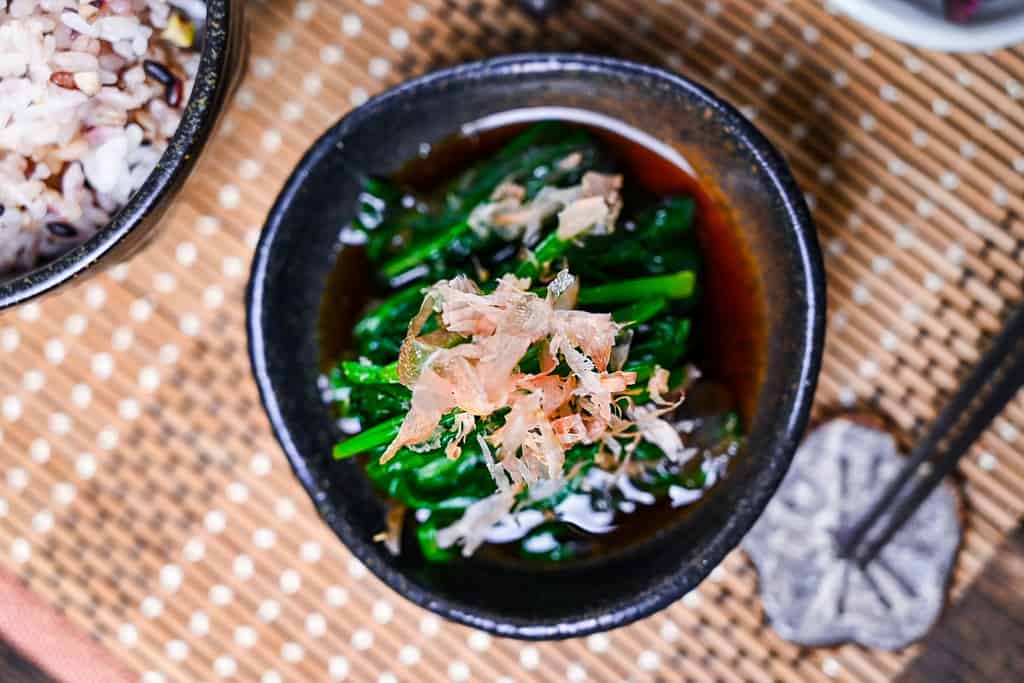
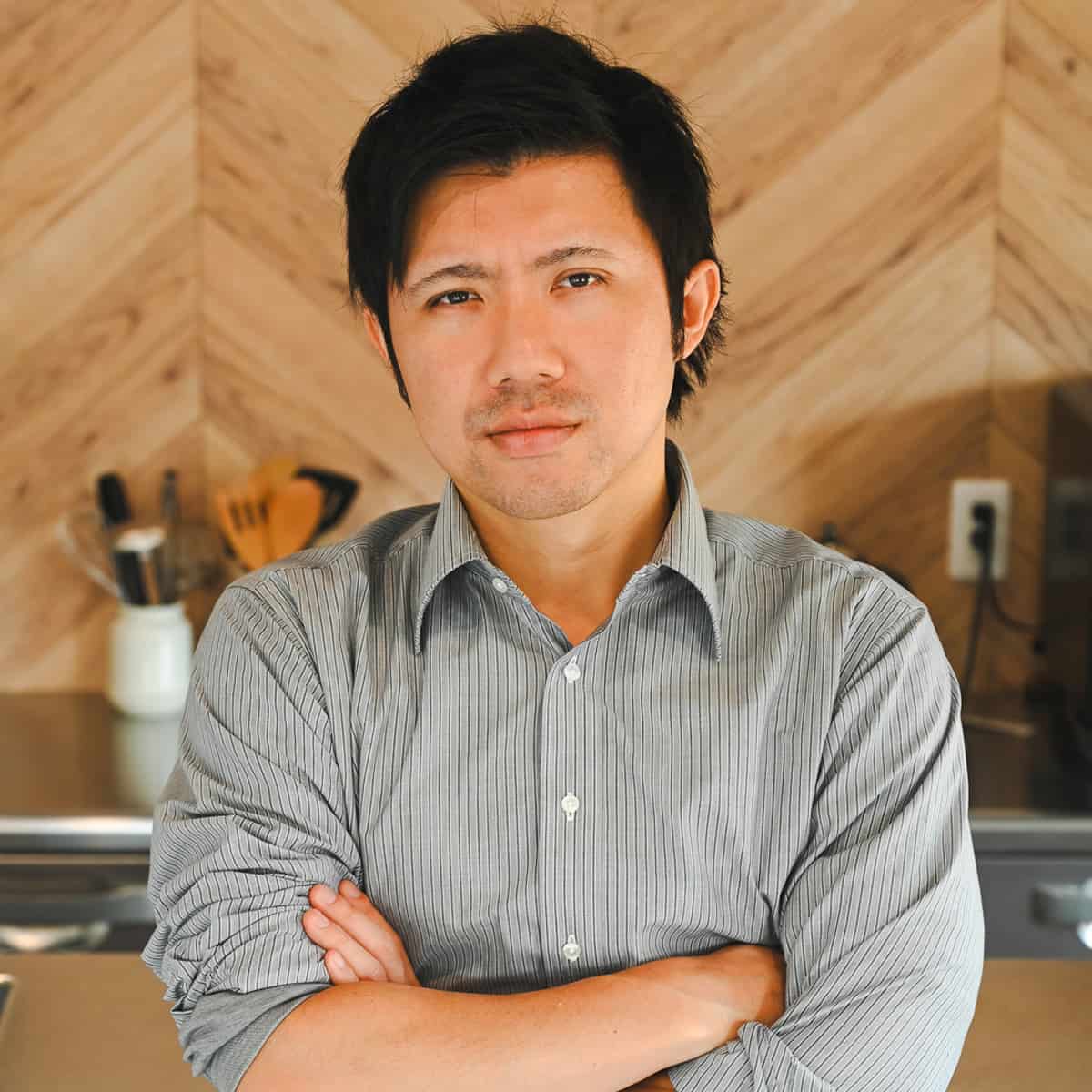
How I Developed This Recipe
When I prepared this Spinach Ohitashi recipe, my main concern was to preserve its natural, delicate flavor, ensuring it would serve as a light and gentle side dish. It’s crafted to complement a set meal, providing a refreshing break between bites of more robust flavors.
Please note that if you taste this dish on its own, you might find it a bit mild or not salty enough. That’s intentional. The subtlety is by design, to make sure it doesn’t overpower but rather enhances the overall meal.
If you’re interested in creating a Teishoku-style dish, I encourage you to include this recipe!
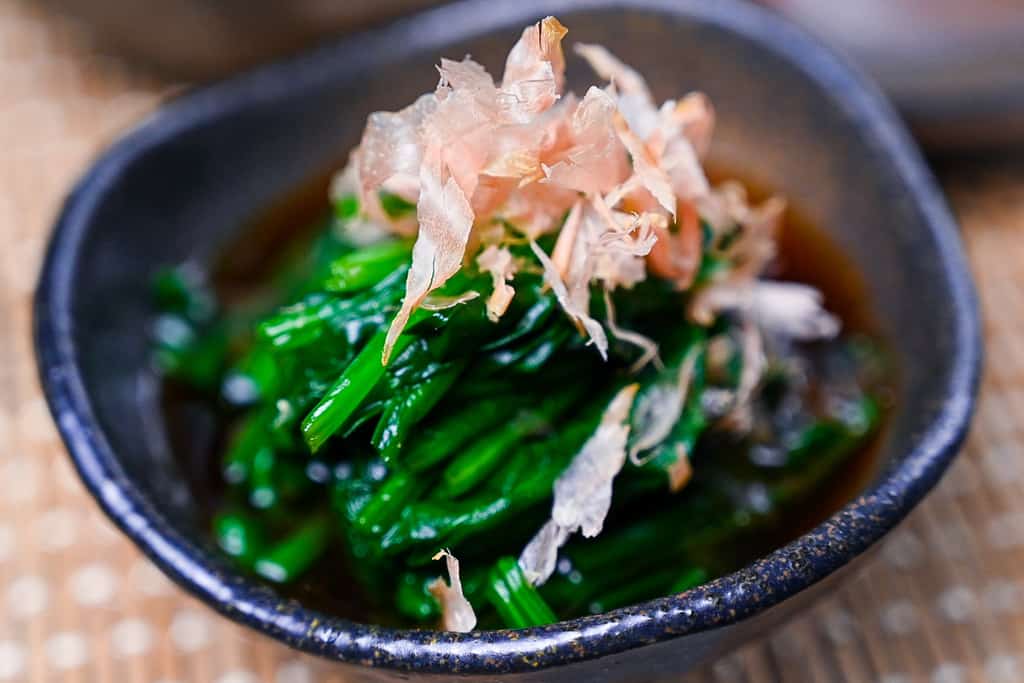
Ingredients & Substitution Ideas
- Dashi Broth: The foundational flavor. Choose from simple awase dashi or vegan dashi. For quicker options, instant dashi granules or packets are perfectly suitable.
- Soy Sauce: Kikkoman soy sauce is a great, budget-friendly choice worldwide. A comprehensive soy sauce guide is available for more insights into selecting the ideal soy sauce for Japanese dishes.
- Mirin: For the most authentic Japanese flavor, opting for Hon Mirin (本みりん), such as Hinode Hon Mirin is ideal. Consult a detailed mirin guide to understand the differences between hon mirin and other varieties.
- Chinese Spinach: Also known as “oriental spinach” or “horenso” (ほうれん草) in Japanese.
- Bonito Flakes (Katsuobushi): A briny garnish that enhances flavor complexity. For vegetarian or vegan alternatives, consider replacing it with sesame seeds.
Curious about the exact brands and products that bring my recipes to life? Discover the brands and ingredients behind my recipes at the Sudachi Amazon Storefront. Explore my handpicked pantry essentials and find your next kitchen favorites!
Jump to Full Recipe Measurements
Visual Walkthrough & Tips
Here are my step-by-step instructions for how to make Spinach Ohitashi at home. For ingredient quantities and simplified instructions, scroll down for the Printable Recipe Card below.
Add dashi, soy sauce and mirin to a saucepan. Bring to a boil over medium heat and allow it to bubble for 1-2 minutes.

Remove the pan from the stove and leave it to cool to room temperature.
Bring a large pot of water to a rolling boil and add a pinch of salt. Set a bowl of ice water next to it. While you wait for the pot to boil, wash the spinach and make sure to remove any dirt or sand.
Hold the spinach by the leaves and dip the stems in the boiling water. I recommend using tongs to hold them to protect your hands from the steam. Hold the spinach stems in the water for 30 seconds.
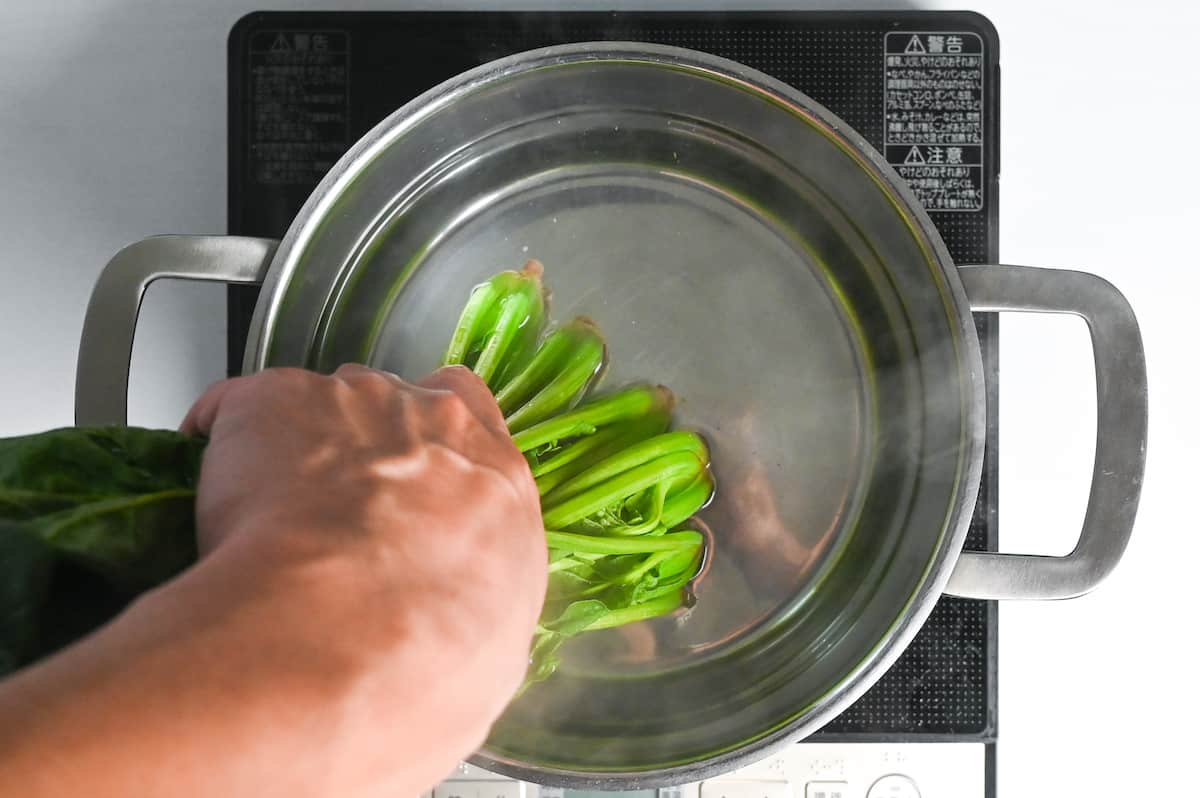
After 30 seconds, submerge the rest of the spinach in the boiling water and cook for 30 seconds.
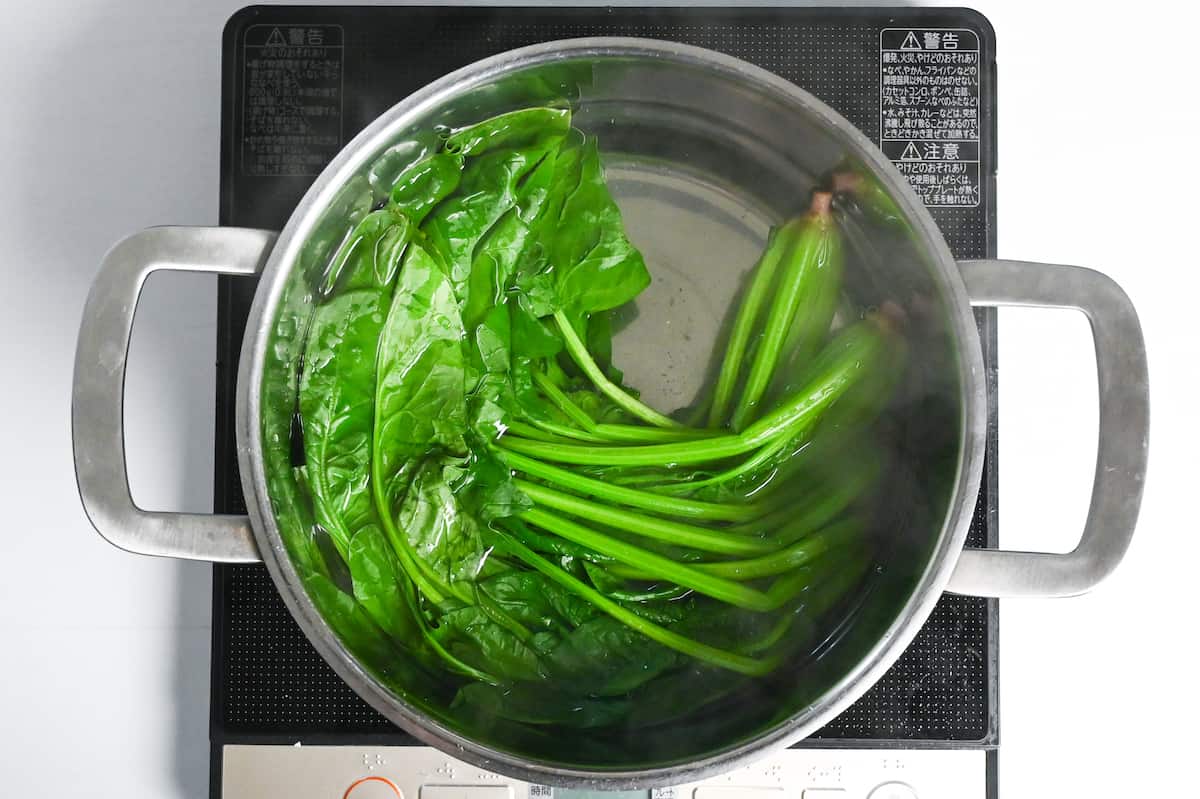
Transfer the spinach to the ice water. This will halt the cooking process and help the spinach maintain a fresh green color and crunchy texture.

Remove the spinach from the bowl and squeeze it thoroughly to remove as much water as possible. (Leftover water will dilute the broth so it’s important to squeeze well!) Transfer to a chopping board, trim off the roots, and cut the spinach and stems into 5cm (2 inch) pieces.
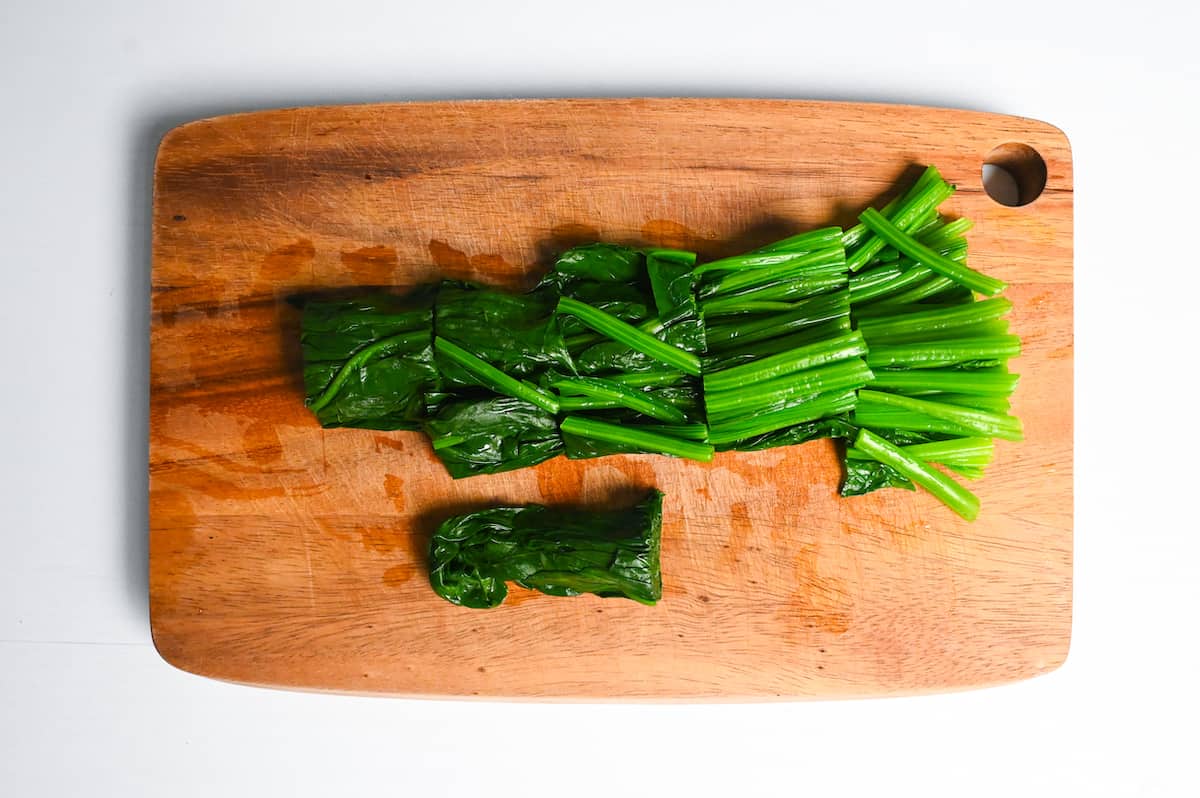
Place the spinach in a container and pour the cooled happo dashi over the top.
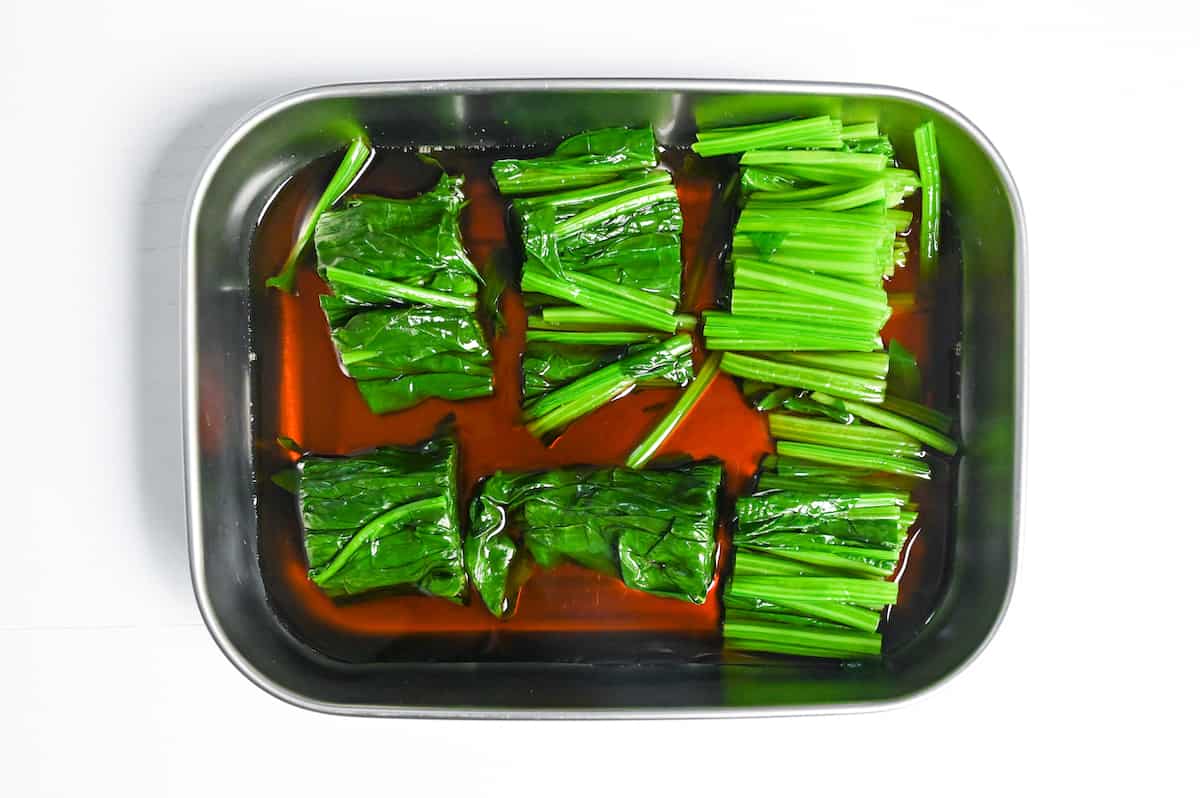
Cover and marinate in the fridge for at least 30 minutes before serving.
Divide into serving dishes and top with bonito flakes or sesame seeds.
Jump to Full Recipe MeasurementsTips & Tricks
- Soak the spinach in cold water before cooking while you wait for the pot of water to boil. This helps maintain a good texture.
- Blanch the stems first – this ensures the spinach is evenly cooked all over. If you cook everything together, the leaves will be overcooked and wilt.
- Use tongs to hold the spinach – not only will this stop your hands from burning from the steam, but you can also use the tongs to quickly remove the spinach and transfer it to the ice water once it’s cooked.
- Transfer to ice water immediately after blanching – this quick cooling method prevents them from losing color, taste, and texture.
- Squeeze well before marinating to prevent excess water from diluting your marinade.
- Marinade for at least 30 minutes before serving, preferably a few hours if you have time.
How to Store
Spinach ohitashi will keep for 2-3 days in a sealed container in the fridge (although this largely depends on the condition of the spinach when you make the dish).
To freeze spinach ohitashi, divide it into individual portions in small containers and pour the marinade over the top. Freeze it together with the marinade. This storage method will keep for 2-3 weeks. Defrost in the fridge overnight or on the counter for an hour or so. Once defrosted, use within 24 hours.
FAQ
Funnily enough, in ancient times, ohitashi was known as “hitashimono” or “soaked things”.
Documents from the Nara period (710-794) suggest that this method of preparation existed then, but the phrase “hitashimono” appears in a record from 1517.
In the Edo period (1603-1868), there were also dishes using marine products such as abalone, sea cucumbers, and jellyfish as ingredients, but after the Meiji period (1868-1912), ohitashi made simply with vegetables and soy sauce became the mainstream.
Because of this, ohitashi can be translated to mean “soy-flavored boiled greens”.
Ohitashi is usually served cold and sprinkled with katsuobushi (bonito flakes).
You can make a vegan version by using kombu and shiitake dashi (I have my own homemade vegan dashi recipe here) and then sprinkling it with sesame seeds instead of katsuobushi.
I recommend serving ohitashi as part of a Japanese-style set meal. Rice, miso soup, pickles and a main dish served with ohitashi on the side. It makes a perfectly balanced meal!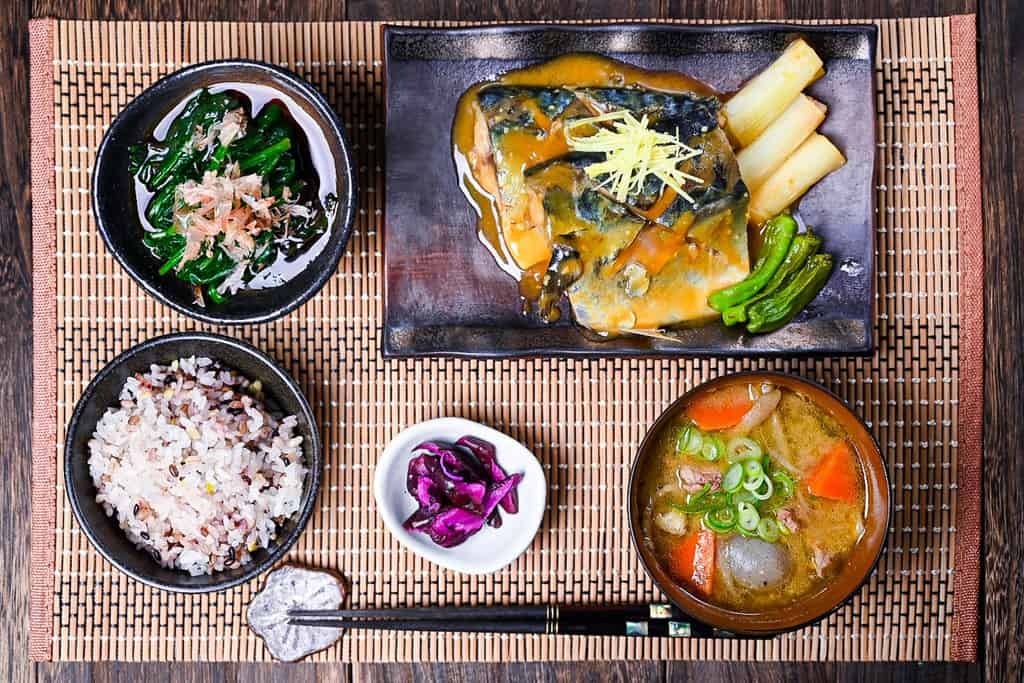
Spinach ohitashi is soaked in a condiment we call “Happo Dashi”. Happo dashi is made with dashi stock, soy sauce, and mirin with a ratio of 10:1:1 respectively.
Even though is uses the same ingredients as mentsuyu (concentrated noodle dipping sauce), happo dashi has a milder and less salty taste since it contains more dashi and less soy sauce.
In Japan, we often water down store-bought mentsuyu for a shortcut happo dashi. If you have mentsuyu sauce at home, you can try this too! The ratio is usually 50:50 of mentsuyu to water but check the packaging since it depends on the brand.
Spinach is the most popular choice of vegetables for ohitashi without a doubt, but it’s not unheard of to use other kinds of vegetables too.
According to Goo Ranking (2015), the top 10 vegetables for ohitashi are below:
Spinach: 842 votes
Canola flower: 148 votes
Eggplant: 140 votes
Japanese mustard spinach: 118 votes
Okra: 105 votes
Crown daisy: 61 votes
Beansprouts: 58 votes
Jew’s mallow: 58 votes
Nappa cabbage: 57 votes
Asparagus: 44 votes
So if you’re not a fan of spinach, perhaps you can try making ohitashi with another vegetable! My personal favorites are canola flower and eggplant.
One great thing about the spinach version though, is how quick it is to make!
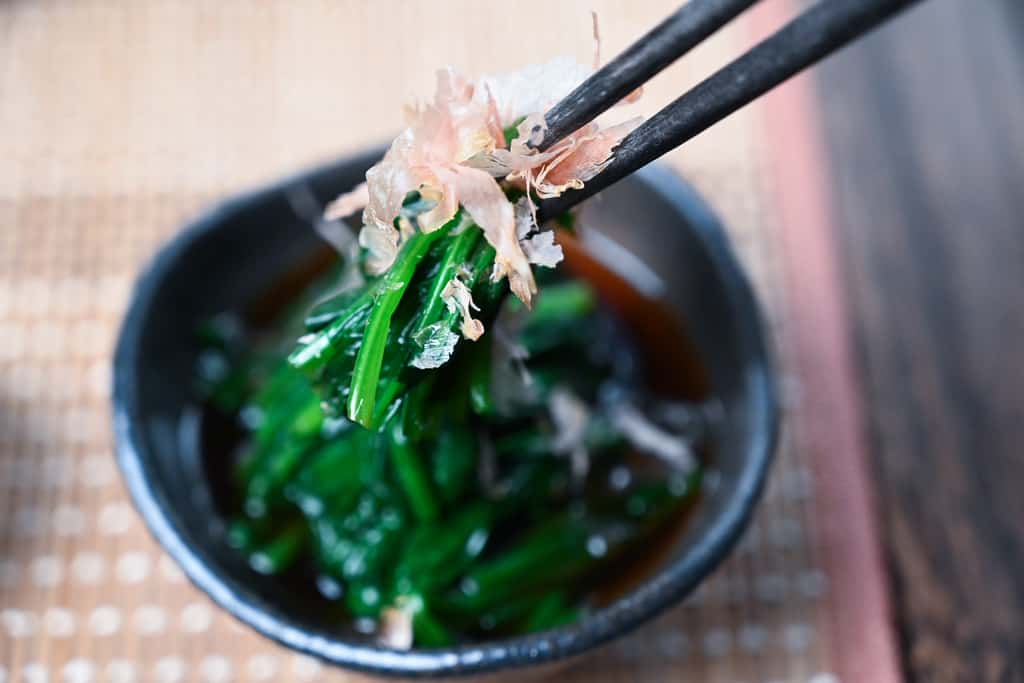
I hope you enjoy this Spinach Ohitashi recipe! If you try it out, I’d really appreciate it if you could spare a moment to let me know what you thought by giving a review and star rating in the comments below. It’s also helpful to share any adjustments you made to the recipe with our other readers. Thank you!

Spinach Ohitashi (Japanese Spinach Salad in Dashi)
Ingredients
- 200 ml dashi stock vegans and vegetarians can use plant-based dashi
- 4 tsp soy sauce
- 4 tsp mirin
- 200 g spinach
- 1 pinch salt
- 1 bowl ice-cold water
- 1 tbsp bonito flakes to garnish, replace with sesame seeds for vegetarians/vegans
Instructions
- First make happo dashi by boiling 200 ml dashi stock, 4 tsp soy sauce and 4 tsp mirin in a saucepan for 1-2 minutes. Remove the pan from the stove and leave it to cool to room temperature.

- Heat a large pot of water and add 1 pinch salt. Set 1 bowl ice-cold water next to it.

- Once the water reaches a rolling boil, hold 200 g spinach by the leaves and submerge the stalks into the boiling water for 30 seconds (use tongs to protect your hands from the steam).

- Push the rest of the spinach into the water and continue to boil for another 30 seconds.

- Immediately transfer the spinach to the bowl of ice-cold water and let it cool for about 1 minute.

- Take the spinach out of the water and squeeze the excess water out as much as you can.

- Cut the spinach into 4-5cm (approx 2 inch) long pieces and place them in a container.

- Pour the happo dashi into the container. Cover and rest in the fridge for at least 30 minutes.

- Serve as a side dish with Japanese-style meals and enjoy!
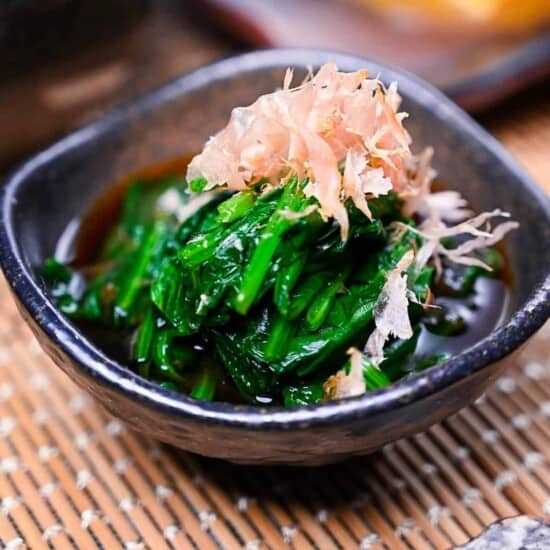




Leave a rating and a comment